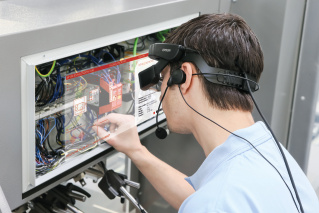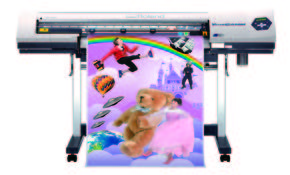Accessibility is an important word to manufacturers. How accessible a product is to the everyman printer can be the deciding factor between single- and triple- figure sales. Its this factor that Swiss manufacturer Bobst had in mind when developing the SP 102-SE die-cutter. Designed to be an entry-level simplified version of the 102-E and launched in 1984, its simplicity was also reflected in its name, SE, standing for simple ejector.
The machine had fewer options than its predecessor and was built as a standard configuration with basic functionality, which would make it more affordable and accessible to small independent folding carton manufacturers. Its low price also meant it would appeal to smaller commercial houses looking to bring their finishing in-house.
Owing to the machine’s success and popularity, the manufacturer secured installations in trade finishing houses, as well as the smaller carton manufacturers.
Flexible benefits
The product’s biggest competitor was the Sanwa. But the SE had more adaptable features, claims Bobst area sales manager for the carton folding market Stuart Taylor. It was easy to maintain and adhered to the manufacturer’s tradition of producing high-quality impressions.
In the early ’90s, Bobst geared itself towards technological innovations that would reduce the makeready times of its machines. The SE was well-suited to this, in that it was designed to be pliable to change, so new technology – such as Quicklock and CUBE (Control Unit Bobst Electronic) operator interface – could be installed and retrofitted.
“The SE is a workhorse of a machine that needs very little maintenance,” says Taylor. A limited amount of optional extras were available on the machine, but customers could choose sidelays for corrugated cardboard, paper devices such as lock paper and a super-mini device of 350x300mm.
The technology for the SE was taken from the 102-E, which had evolved from the old cast-type machines. The 102-E, unlike its successor, was for buyers wanting to pay a little bit more in terms of modern technology. It was more able to compete against the larger Chinese and Japanese manufacturers’ die-cutters.
Production of the SE stopped in 2004. It was first replaced by the SPeria in the same year and then the Commercial in 2006. They were more modern, with more technology included as standard, such as CUBE. The technology for the gripper bars was also updated.
Bespoke service
Although production of the machine has stopped, Bobst still manufacturers parts for the SE and will take back old models as part exchange. Service contracts are bespoke to each customer’s request and the manufacturer has 24 engineers in the UK. Parts are dispatched from its Redditch warehouse, Worcestershire, which also houses its training centre. Spare parts can also be ordered direct from Switzerland.
Buyers should check for chain wear and stretch and the bottom of the lower counterplate bed, as this can disintegrate through natural wear and tear. “It all depends on how much maintenance has been done on the machine and how well it has been looked after,” explains Taylor. Expect to pay around $AU270,000 to $AU330,000 for a good used machine, depending on age.
Supplier: MAN Ferrostaal
Comment below to have your say on this story.
If you have a news story or tip-off, get in touch at editorial@sprinter.com.au.
Sign up to the Sprinter newsletter


